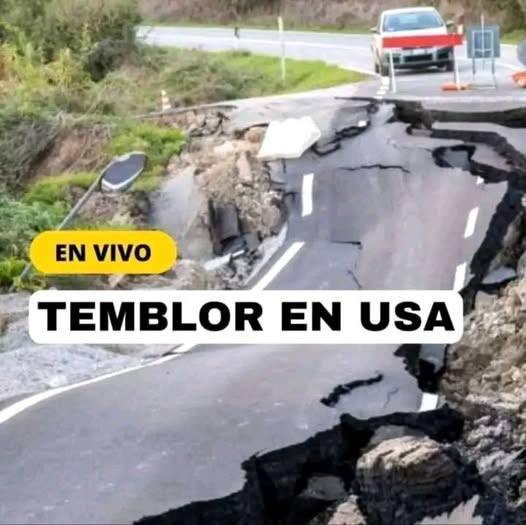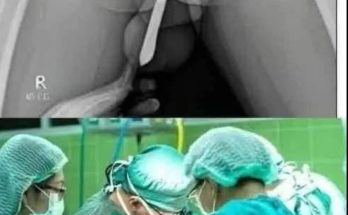
Magnitude-5.4 Earthquake Rattles Southern California, Causes Minor Damage
Southern California residents awoke with a jolt early Monday morning as a magnitude-5.4 earthquake struck at 3:18 a.m., disrupting the quiet hours and sending millions scrambling from their beds. According to the U.S. Geological Survey (USGS), the epicenter was located roughly 10 miles northwest of Coachella Valley, nestled along a lesser-known strand of the San Andreas fault system. The quake, though moderate in magnitude, reverberated far and wide across the region.
The shaking, which lasted between 10 and 12 seconds, was described by many as sharp and startling. Residents reported hearing deep, rumbling noises and feeling an intense rocking motion that sent belongings tumbling from shelves. “It felt like a freight train ran beneath the house,” shared Linda Martinez, a Palm Springs resident who clutched her cat and ran to a doorway as glass rattled around her.
More than 80,000 people submitted “Did You Feel It?” reports to the USGS website, documenting the widespread impact. Social media platforms quickly flooded with images and videos showing toppled bookshelves, broken picture frames, and water sloshing violently out of backyard pools. One viral video captured a ceiling light swaying dramatically above a frightened family huddled together in their living room.
Despite the fright, officials reported no fatalities and only a handful of minor injuries, mostly from slips or falling objects. “We are fortunate this wasn’t worse,” said Riverside County Fire Chief Daniel Gomez, adding that most calls received were for minor medical assistance and building inspections.
In the quake’s aftermath, precautionary measures rippled through the region. Schools in Riverside and San Bernardino counties announced delayed start times to allow engineers to inspect classrooms and gymnasiums for structural damage. “Safety is our first priority,” stated Riverside Unified School District Superintendent Maria Torres. “We want to ensure our campuses are completely secure before welcoming students back.”
Caltrans crews fanned out to inspect highways and overpasses, temporarily closing a few major routes for thorough evaluations. Fortunately, no significant damage was reported to bridges or roadways, allowing traffic to resume before the morning rush hour.
Hospitals across the affected area briefly switched to backup power systems as a precaution. At Desert Regional Medical Center in Palm Springs, staff moved patients away from windows and secured medical equipment as tremors passed. “Our teams train extensively for these scenarios,” explained hospital administrator Dr. Reena Shah. “We were fully operational again within minutes.”
Utilities also responded swiftly. Southern California Edison and local gas providers inspected power lines and gas pipelines. While some minor localized outages were reported, there were no widespread blackouts, and most services were restored quickly.
Seismologists emphasized that while this quake was moderate, it occurred at a relatively shallow depth of about 7 miles beneath the surface, contributing to the strong ground motion felt across the region. “Even mid-range earthquakes like this can pack quite a punch, especially when they’re shallow,” noted Dr. Hannah Lee, a geophysicist at Caltech. “Shaking intensity depends not just on magnitude, but also on depth, fault type, and local soil conditions.”
Experts reiterated that this event does not change the long-term probabilities of a larger, potentially catastrophic earthquake striking along the San Andreas fault. However, each seismic event provides valuable data for researchers and serves as a wake-up call for residents. “Every earthquake is a learning opportunity,” Dr. Lee said. “We analyze ground motion data, fault behavior, and community responses to better prepare for the future.”
California Office of Emergency Services (Cal OES) Director Nancy Ward urged residents to treat this as a reminder rather than a cause for panic. “Make a plan, secure your space, and stay informed,” she said in a press briefing. She encouraged families to check their emergency kits, practice evacuation routes, and review safety procedures for future quakes.
Meanwhile, local hardware stores reported a spike in purchases of earthquake preparedness supplies, including water storage containers, flashlight batteries, and wall anchors for furniture. “It happens every time we get a noticeable quake,” said store manager Mark Liu of San Bernardino. “People realize how unprepared they are, and they rush in to get what they need.”
Residents shared mixed emotions after the quake—some grateful for minimal damage, others shaken by the reminder of living in earthquake country. “I’m just thankful my kids are okay,” said Erica Lopez of Indio, who gathered her family under a sturdy table when the shaking began. “We’ll definitely be securing the heavy furniture this weekend.”
In the coming days, engineers will continue evaluating infrastructure, and aftershock activity will be closely monitored. As of Monday evening, several smaller aftershocks had been recorded, though none caused further damage.
While Southern Californians return to their routines, the quake serves as a stark reminder of the region’s seismic vulnerability. For now, experts and officials hope that heightened awareness and preparedness will turn this event into a valuable lesson rather than a tragic headline in the future.


